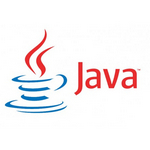
php小编草莓深入研究Java Git,揭示其神秘面纱,助你成为版本控制大师。Git作为一种分布式版本控制系统,为开发者提供了强大的版本管理功能,帮助团队更好地协作,追踪代码变更历史。通过学习Git的基础知识和高级技巧,你将能够更高效地管理项目,提升开发效率,实现代码版本的精确控制。让我们一起揭开Java Git的神秘面纱,探索版本控制的奥秘!
git 是一个分布式版本控制系统,为软件开发人员提供高效的代码管理工具。对于使用 Java 开发的项目来说,集成 Git 至关重要,因为它可以帮助团队协作、跟踪代码更改并回滚错误。本文旨在指导 Java 开发人员使用 Git,从基本概念到高级特性,助你成为版本控制大师。
安装和初始化:
在使用 Git 之前,需要先进行安装。可以通过官方网站下载并安装 Java Git 客户端。安装后,在项目目录中打开命令行窗口,初始化一个新的 Git 存储库:
立即学习“Java免费学习笔记(深入)”;
git init
命令行操作:
Git 主要通过命令行操作。以下是一些常见命令:
工作流程:
Java Git 的工作流程遵循以下步骤:
分支和合并:
分支是 Git 的一个重要特性,它允许开发人员在不同版本或功能上并行工作。要创建分支,可以使用以下命令:
git branch <分支名>
合并用于将不同分支的更改合并在一起。要合并分支,可以使用以下命令:
git merge <分支名>
回滚错误:
Git 提供多种方式来回滚错误或恢复以前的代码版本。其中一种方法是使用 git reset 命令,它可以将工作树或暂存区重置到特定的提交:
git reset HEAD~1
高级用法:
结论:
掌握 Java Git对于高效的代码管理至关重要。通过理解基本概念和实践常见命令,开发人员可以提高协作效率,跟踪代码更改并轻松回滚错误。本文提供了入门指南,涵盖了 Git 的关键操作和高级用法。持续练习和探索将帮助你成为版本控制的大师,为你的 Java 开发项目带来巨大的好处。
以上就是揭开 Java Git 的神秘面纱,成为版本控制大师的详细内容,更多请关注php中文网其它相关文章!

java怎么学习?java怎么入门?java在哪学?java怎么学才快?不用担心,这里为大家提供了java速学教程(入门到精通),有需要的小伙伴保存下载就能学习啦!

Copyright 2014-2025 //m.sbmmt.com/ All Rights Reserved | php.cn | 湘ICP备2023035733号